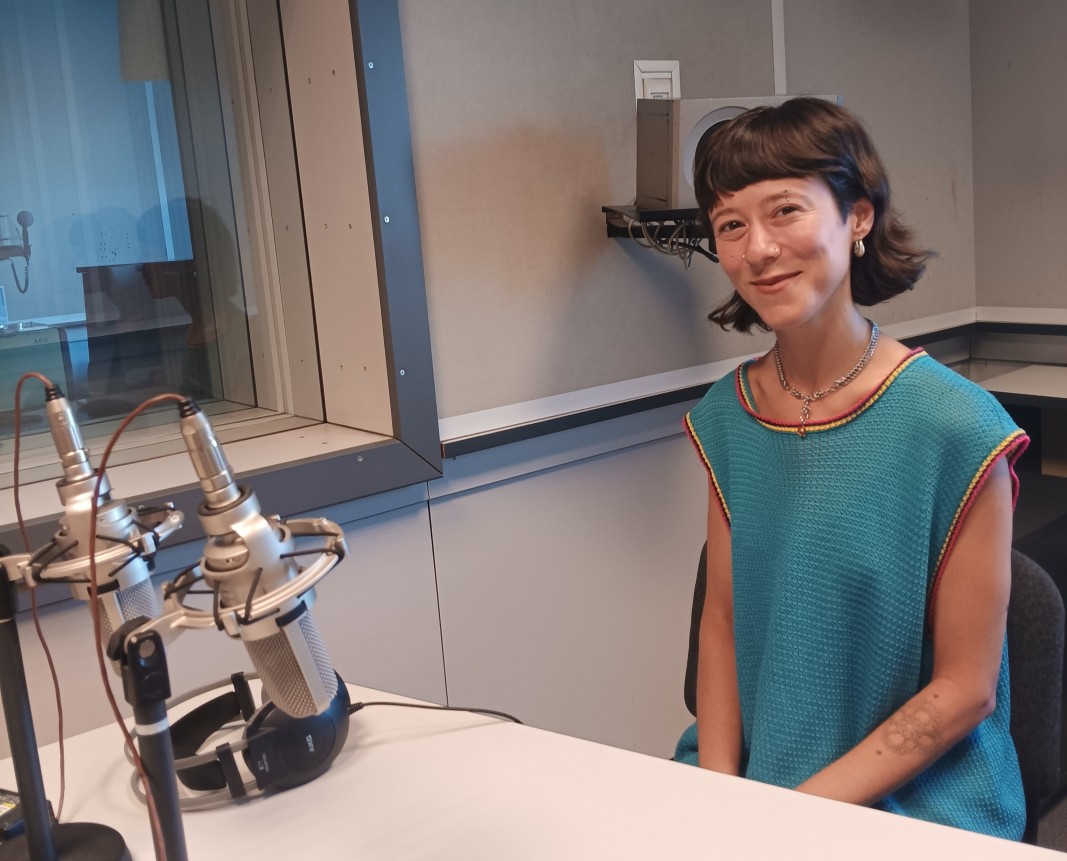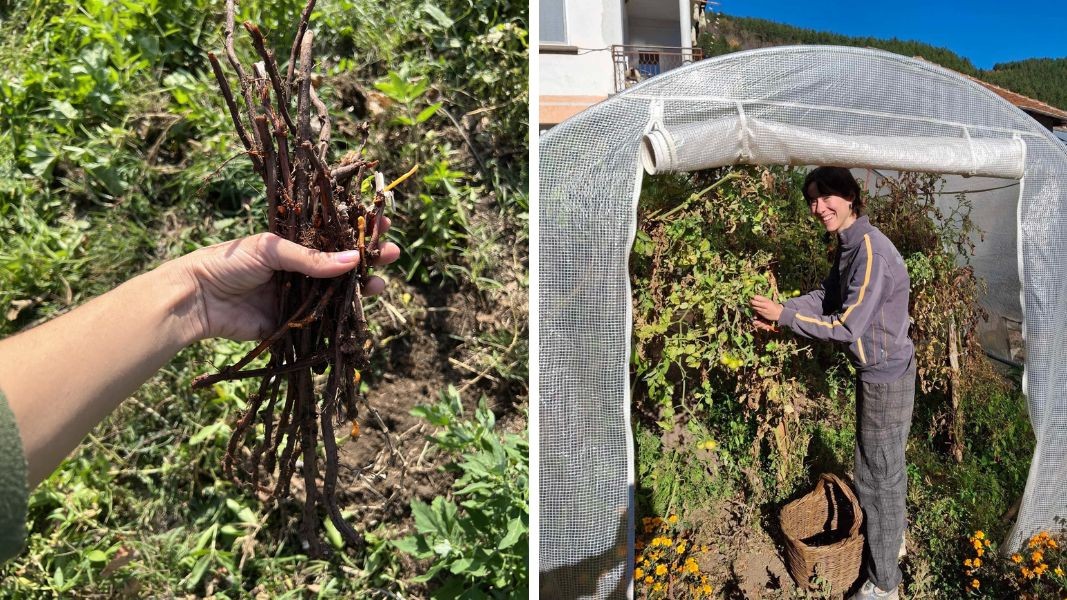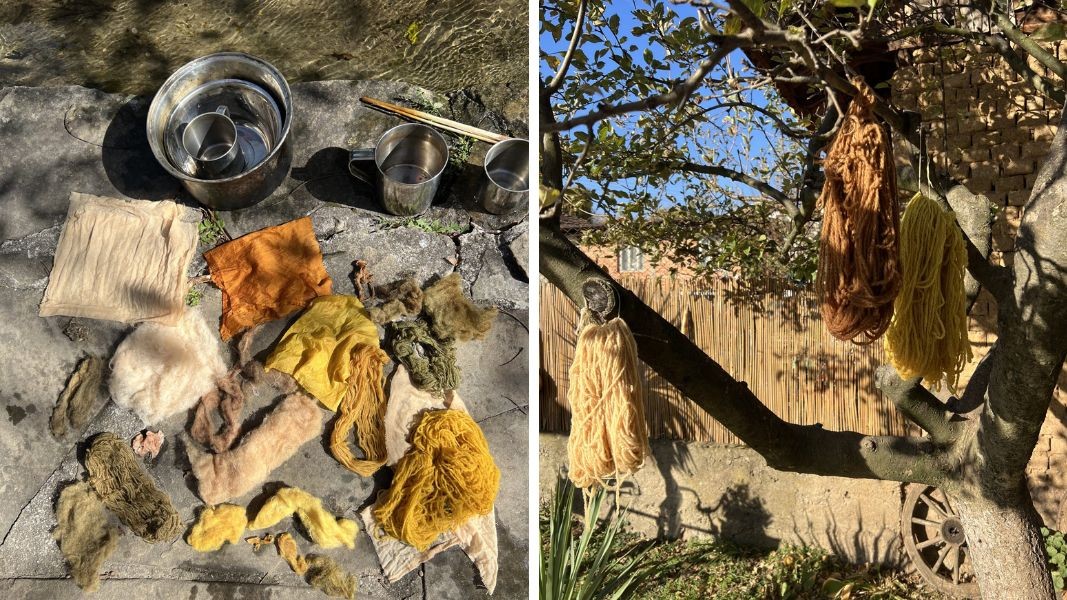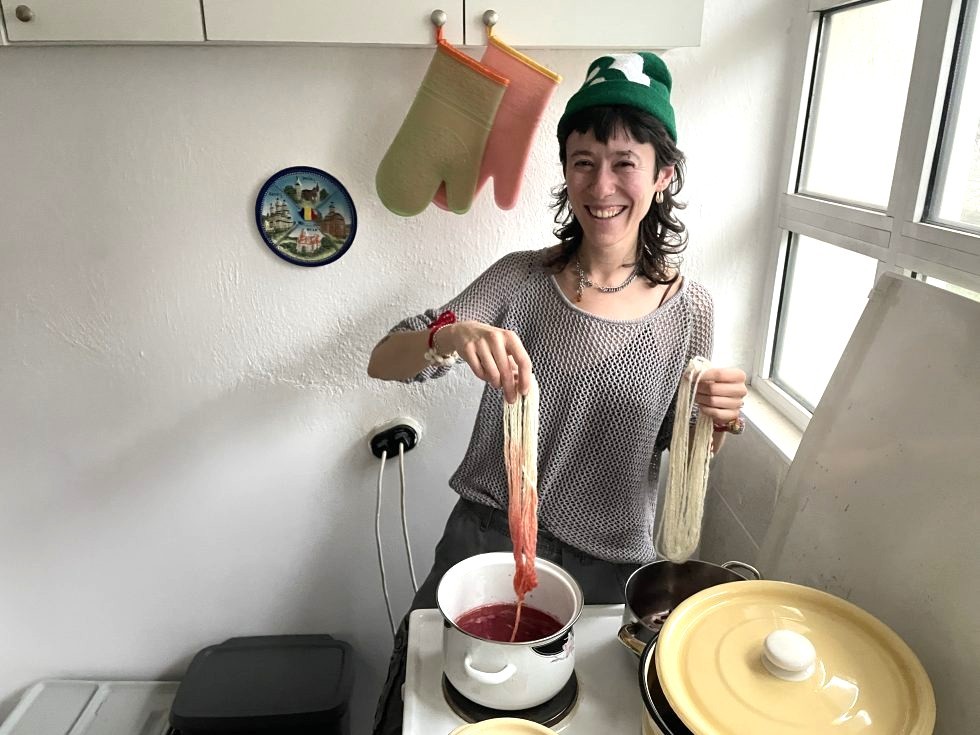Dyeing with the colors of nature – this is the topic that the person in today's story has chosen to explore through ethnographic approach. She is a young Bulgarian, who arrived in the USA when she was a child. In Chicago, Eleonora graduated with a bachelor's degree in literature and continued with a master's program in New Mexico.
Today, Eleonora is a Fulbright trainee and has focused on the field of textile art. The topic of the scientific work that brought her back to Bulgaria carries the charge of ecology. The researcher wants to gather knowledge from the old Bulgarians about the natural dyes that they used in the production of their clothing, carpets and blankets.

The host institution is the Institute of Ethnology and Folklore Studies with Ethnographic Museum at the Bulgarian Academy of Sciences in Sofia. They invited Eleonora Edreva to give a lecture to a wider audience, as the topic was "Traditional and Modern Dyeing with Natural Dyes in Bulgaria".

"I didn't know what to expect before I arrived; I didn't find much information on the web. First I went to Chiprovtsi - the only place I knew I would find at least some information on the topic. There lives Nikola Nikolov - a chemist, teacher and principal of the local school, who has dedicated a lot of time and energy to preserving the local dyeing traditions. Unfortunately, due to his advanced age, I was unable to meet him. However, he had led a natural dyeing class at the school and I met many people in the town who still keep the notes from this class. Unfortunately, no one continues to work seriously on this topic. Now there are some people who are engaged in weaving in Chiprovtsi and are trying to do experiments."

With her scientific project on dyeing with natural materials, Eleonora also travelled to other places in the country where there are keepers of the old traditions. In the Ethnographic Open-Air Museum "Etar" near Gabrovo, she discovered a craftswoman engaged in dyeing. "Unfortunately, there was a break in traditions there too and the craftswoman is now trying to revive the old knowledge and experiments with local plants. It is interesting to see which herbs are usable and which are not, and what colors are obtained," the researcher from the USA says.
Eleonora told us that she was born in Bulgaria but while she was still a little girl her family moved to live in Chicago. Despite this, they never stopped speaking Bulgarian at home. She and her sisters (born in Chicago) speak the language perfectly and this helped her continue with her project in Bulgaria. However, her interest in dyeing techniques was provoked by the way of life of the Native Americans in New Mexico:

"They have preserved their culture and traditions very well and their textile traditions are very strong – in weaving and dyeing. From there I became interested in this topic, as I was also interested in how these tribes have managed to preserve their traditions so well and manage to live simultaneously in modern times and in the world of their ancestors through faith, crafts and various practices. It seems to me that when people have gone through difficulties and assimilation, like the Native Americans, for example, it becomes important for them to preserve traditions and pass them on to the next generations."

The dyeing technique used by the Native Americans is very similar to that in Bulgaria, Eleonora Edreva also told us. And since it depends to the greatest extent on local plants, our compatriot is trying to study the specific dyeing plants in Bulgaria. But the technique is the same – you collect flowers or leaves, boil water and then dip the textile fiber that we will dye. Interestingly, wool and silk are easier to dye than cotton, linen, etc.
Eleonora Edreva’s research project has already ended, but she has decided to stay in Bulgaria. She sees the positive aspects of her homeland and believes that there are great conditions for living and development here for every young person who wants to work in the field of science.
Author: Gergana Mancheva
Publication in English: Alexander Markov
Photos: Fulbright Bulgaria, Gergana Mancheva
The Bulgarian minority in Romania marked a significant event with the official opening of the Bulgarian Inn in the village of Izvoarele (Hanul Bilgarilor), Teleorman County (Southern Romania)- a locality with Bulgarian roots dating back over 200 years...
The 14th edition of DiVino.Taste, Bulgaria’s leading forum for wines and winemakers, will take place from 28 to 30 November at the Inter Expo Centre in Sofia. Over 80 producers from all wine regions will participate, offering tastings of around 600 of the..
Minutes before the second and final reading, at the parliamentary budget and finance committee, of the state budget for 2026, the leader of the biggest party represented in parliament GERB Boyko Borissov halted the procedure and sent the draft bill..

+359 2 9336 661
